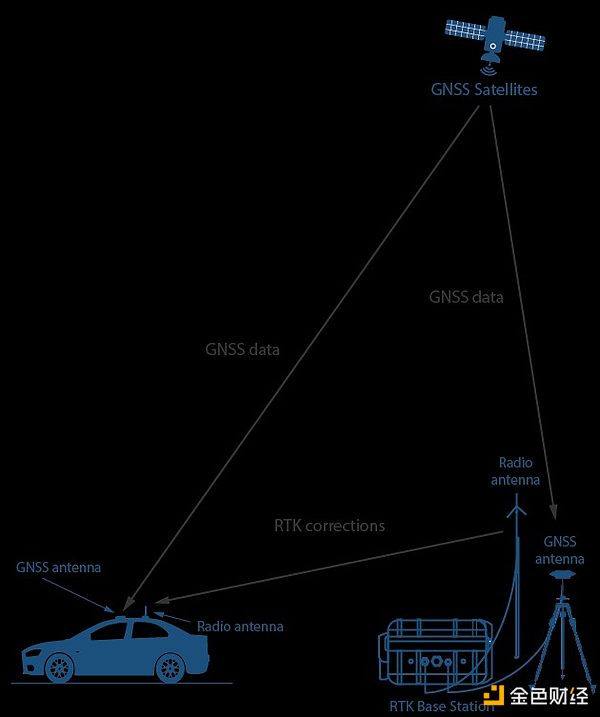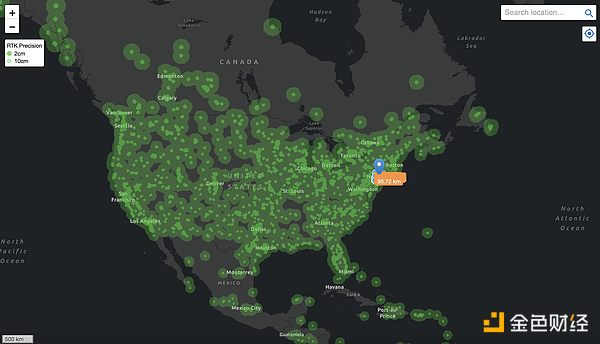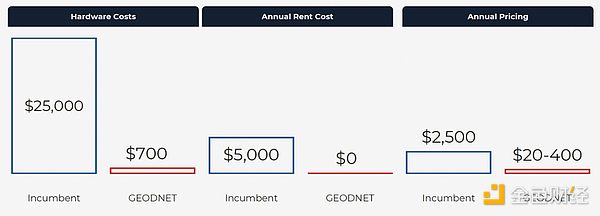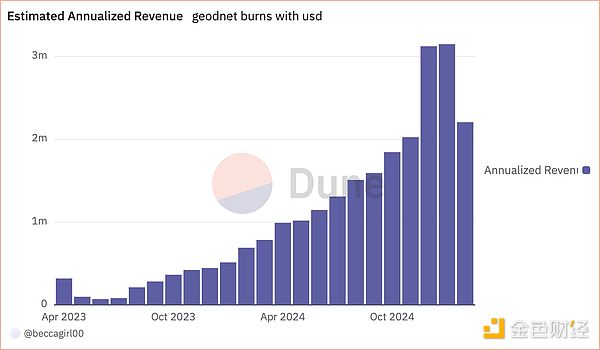Author: Shayon Sengupta, Multicoin Capital; Translator: 0xjs@黄金财经
Today, we are excited to announce that Multicoin has led a strategic acquisition of GEOD, the native token of the Geodnet network, from the Geodnet Foundation for $8 million.
Geodnet is a precision positioning network that uses the decentralized physical infrastructure network (DePIN) economic model to provide mission-critical positioning services for drones, self-driving cars, and the tens of millions of robots that may emerge in large numbers around the world in the next few years.
Physical AI is coming
In Blade Runner 2049, we saw a future world where androids live with humans as co-contributors to the economy and society. By 2025, our robots are far less human-like, but various special-purpose machines have quietly integrated into all aspects of modern life.
Language models are commoditizing intelligence, unleashing new creativity, and transforming knowledge-based work. But artificial intelligence is not just about text, images, and videos. The evolution of artificial intelligence is happening in the physical world, and robotics is the next frontier.
As AI models become more powerful, their ability to understand and interact with the physical environment will improve dramatically. This shift will give rise to new autonomous systems, from self-driving cars and humanoid robots to drones and industrial automation equipment, that will operate with unprecedented intelligence and autonomy.
For these robots to work properly, they need to answer a fundamental question: “Where am I?”
Localization: A $5 Billion Problem
As tens of millions of autonomous and semi-autonomous devices are deployed, they all face a common challenge: spatial awareness. Drones performing delivery missions, self-driving cars navigating dense urban environments, and agricultural machinery for precision planting all require sub-centimeter positioning accuracy to operate safely and efficiently.
To achieve this level of accuracy, these systems rely on sensor fusion techniques that combine multiple localization methods.
LiDAR provides high-resolution depth maps, but it doesn’t work well in fog or rain (and it’s heavy, power-hungry, and expensive). Radar provides reliable distance measurements but lacks fine precision. Vision-based SLAM enables real-time mapping, but performance degrades in low-visibility environments. Each of these methods has limitations, and no single system is foolproof. In the realm of positioning methods, Global Navigation Satellite System (GNSS) positioning, corrected using a Real-Time Kinematic (RTK) base station, is considered one of the most reliable inputs. Standard GNSS positioning is inherently inaccurate due to atmospheric interference and multipath errors, with errors of up to 5-10 meters. RTK solves this problem by using fixed base stations that compare satellite signals to known positions and transmit real-time correction data. This method can achieve centimeter-level accuracy, which is a key breakthrough for real-world AI applications. Most large robotics and automation companies have integrated RTK into their systems, such as DJI for high-precision drones, John Deere for self-driving tractors, Tesla for self-driving cars, and Boston Dynamics for industrial inspection robots.

Image source: GNSS Store
One problem with RTK today is cost. Building and maintaining RTK base stations is capital intensive, requiring significant investments in hardware, site acquisition, maintenance, and more. Traditional vendors like Trimble, Hexagon, and Topcon build these base stations themselves and charge customers thousands of dollars per tracked device, limiting accessibility and speed of deployment. Coverage is often concentrated in profitable areas, resulting in some places still not being able to obtain high-precision positioning services.
Disrupting the cost structure with DePIN
We have already detailed how the token-incentivized, contributor-owned DePIN structurally disrupts the cost structure of a global, hardware-intensive network. Geodnet, the world’s largest precision positioning network, is leveraging these principles to incentivize independent operators to install RTK base stations and provide correction data in exchange for token rewards.
By shifting the cost burden from a single operator to a distributed network, Geodnet is able to deploy production-grade RTK base stations at a fraction of the cost of traditional vendors, specifically removing the two largest costs of building a network: land and labor. As a result, Geodnet is able to expand coverage faster, ensure redundancy, and provide more reliable GNSS correction services than incumbents.
The result is a globally distributed network that scales naturally while maintaining the same quality of service, while reducing the price of use for end users.
Geodnet has been actively expanding since last year. The number of network base stations will increase from 1,400 in November 2022 to 7,800 in June 2024, and by January 2025, there will be more than 13,000 base stations in 4,377 cities and 142 countries.

Image source: Dune Analytics
The network has reached a "critical scale" with coverage capable of serving more than 60% of the potential GNSS correction market. Notably, the network has acquired this supply with great capital efficiency, with only 11% of total tokens issued to contributors over the past three years.

Image source: Geodnet console
Geodnet is a classic example of the DePIN model being successfully applied in practice, not just in theory. Geodnet base stations are not only an order of magnitude cheaper to purchase and deploy (i.e., $700 consumer-grade equipment versus $12,000 enterprise-grade RTK base stations; denser deployments on consumer-grade networks can achieve comparable coverage to enterprise-grade RTK base stations), but their annual fees are also an order of magnitude lower due to the elimination of hardware deployment costs. Without a doubt, Geodnet is the most scalable and cost-competitive positioning solution in the world today.

Currently, Geodnet's annualized on-chain revenue is approximately US$3 million, which comes from enterprise-level service agreements signed with customers such as Propeller, DroneDeploy, Quectel, and the U.S. Department of Agriculture (USDA). In today's DePIN projects, Geodnet's demand-side revenue is growing the fastest.

In our early conversations with Geodnet founder Mike Horton, we asked him how he won some of the world’s most high-profile autonomous vehicle, drone, and agricultural robot customers. His answer was consistent: the core structural cost advantage that DePIN brings.
Turning Point
In the next decade, industries may deploy tens of millions of robots, transforming the logistics, infrastructure, and automation landscape. Drones will conduct real-time inspections of power lines and pipelines. Self-driving cars will improve freight and ride-hailing services. Warehouses will reduce their reliance on human labor through specialized machines. Homes will see humanoid robots helping with daily chores.
None of these robots can function without reliable positioning data. Self-driving cars will need RTK-enhanced GNSS to navigate dense urban areas where GPS alone won’t work. Drones will need precise positioning to land accurately at charging stations. We believe RTK positioning is not only complementary to other sensor modalities like LiDAR and RADAR, but essential.
Many robotics companies spend millions of dollars each year on traditional GNSS correction services that are expensive, have limited coverage, and have inconsistent accuracy. We believe Geodnet is providing a more cost-effective and higher-quality product to these customers today, and to many more in the future.
The AI-driven robotics boom is not a question of “if,” but “when.” Where are the robots? They’re coming, and fast. With Geodnet, we’ll know exactly where they are.
 Jixu
Jixu









